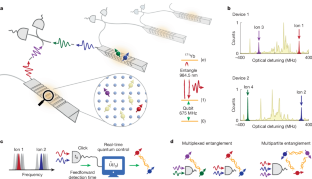2025-02-26 アリゾナ大学
<関連情報>
- https://news.arizona.edu/news/sharper-image-u-built-instrument-reveals-pictures-baby-planets
- https://iopscience.iop.org/article/10.3847/1538-3881/ad8648
MagAO-XによるPDS 70 bおよびc太陽系外惑星のHαにおける3年間の高コントラストイメージング: 強い原始惑星Hα変動と惑星間塵の証拠 Three Years of High-contrast Imaging of the PDS 70 b and c Exoplanets at Hα with MagAO-X: Evidence of Strong Protoplanet Hα Variability and Circumplanetary Dust
Laird M. Close, Jared R. Males, Jialin Li (李嘉霖), Sebastiaan Y. Haffert, Joseph D. Long, Alexander D. Hedglen, Alycia J. Weinberger, Katherine B. Follette, Daniel Apai, Rene Doyon,…
The Astronomical Journal Published: 2024 December 16
DOI:10.3847/1538-3881/ad8648

Abstract
We present 3 yr of high-contrast imaging of the PDS 70 b and c accreting protoplanets with the new extreme AO system MagAO-X as part of the MaxProtoPlanetS survey of Hα protoplanets. In 2023 and 2024, our sharp (25–27 mas FWHM), well-AO-corrected (20%–26% Strehl), deep (2–3.6 hr) images detected compact (r ∼ 30 mas; r ∼ 3 au) circumplanetary disks (CPDs) surrounding both protoplanets. Starlight scattering off the front edge of these dusty CPDs is the likely source of the bright compact continuum light detected within ∼30 mas of both planets in our simultaneously obtained continuum 668 nm filter images. After subtraction of contaminating continuum and point-spread function residuals with pyKLIP angular differential imaging and spectral differential imaging, we obtained high-contrast ASDI Hα images of both planets in 2022, 2023, and 2024. We find the Hα line flux of planet b fell by (8.1 ± 1.6) × 10−16 erg s−1 cm−2, a factor of 4.6 drop in flux from 2022 to 2023. In 2024 March, planet b continued to be faint with just a slight 1.6× rise to an Hα line flux of (3.64 ± 0.87) × 10−16 erg s−1 cm−2. For c, we measure a significant increase of (2.74 ± 0.51) × 10−16 erg s−1 cm−2 from 2023 to 2024, which is a factor of 2.3 increase. So both protoplanets have recently experienced significant Hα variability with ∼1 yr sampling. In 2024, planet c is brighter than b: as c is brightening and b generally fading. We also tentatively detect one new point source “CC3” inside the inner disk (∼49 mas; at PA ∼ 295°; 2024) with orbital motion roughly consistent with a ∼5.6 au orbit.



